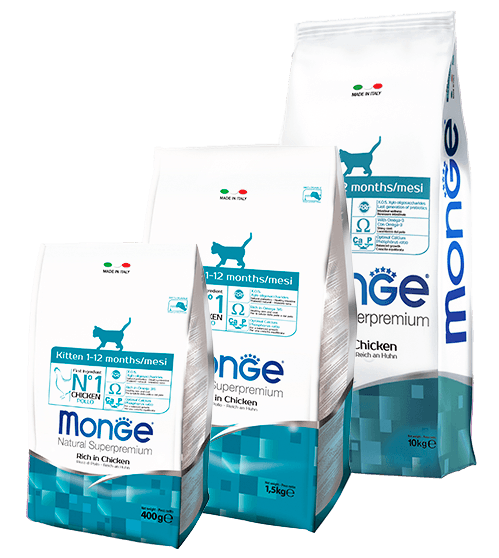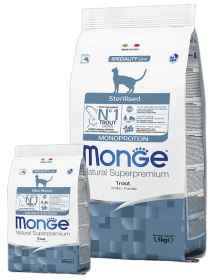Monge
Kitten Chicken
Kitten
Regular
Indoor and Outdoor
Click to reveal the score breakdown
Tap to view ingredients, guaranteed analysis and more
Ingredients
Chicken (fresh)
10%
Chicken (dehydrated)
26%
Rice
Animal fat (chicken fatpreserved with natural antioxidants)
99.6%
Corn
Hydrolysed animal proteins
Beet pulp
Corn gluten meal,
Whole egg powder (rich in complete proteins)
Fish (dehydrated salmon)
and also:
Fish oil (salmon oil), Brewer’s yeast (source of MOS and vitamin B12), Insoluble pea fiber, Taurine, XOS (xylo-oligosaccharides) (3g/kg), Hydrolysed yeast (MOS),, Yucca schidigera, Rosehip
Vitamins and Additives
Vitamin A 26000 IU
Vitamin B1 12 mg
Vitamin B2 0.1 mg
Vitamin B6 7 mg
Vitamin B12 0.1 mg
Vitamin C 200 mg
Vitamin D3 1830 IU
Vitamin E 130 mg
and also:
Biotin (0.3mg), Niacin (46mg), Pantothenic Acid (12mg), Folic Acid (16mg), Choline Chloride (3000mg), Inositol (15mg), Manganous Sulphate Monohydrate (32mg), Zinc Oxide (150mg), Copper Sulphate Pentahydrate (13mg), Iron Sulphate Monohydrate (110mg), Sodium Selenite (0.2mg), Calcium Iodate (1.8mg), L-Carnitine (550mg), DL-methionine technically pure (8gr), Taurine (0.25IU)
Guaranteed Analysis
Crude Protein
34%
Crude Fat
20%
Crude Fiber
2.5%
Crude Ash
6.5%
Calcium
1.5%
Phosphorus
1.1%
Omega 3
1%
Omega 6
8.98%
Metabolizable Energy
4220 kcal/kg
Product last updated: April 29, 2023, 9:59 AM
Please hold on while we’re getting the best offers for you
7474












